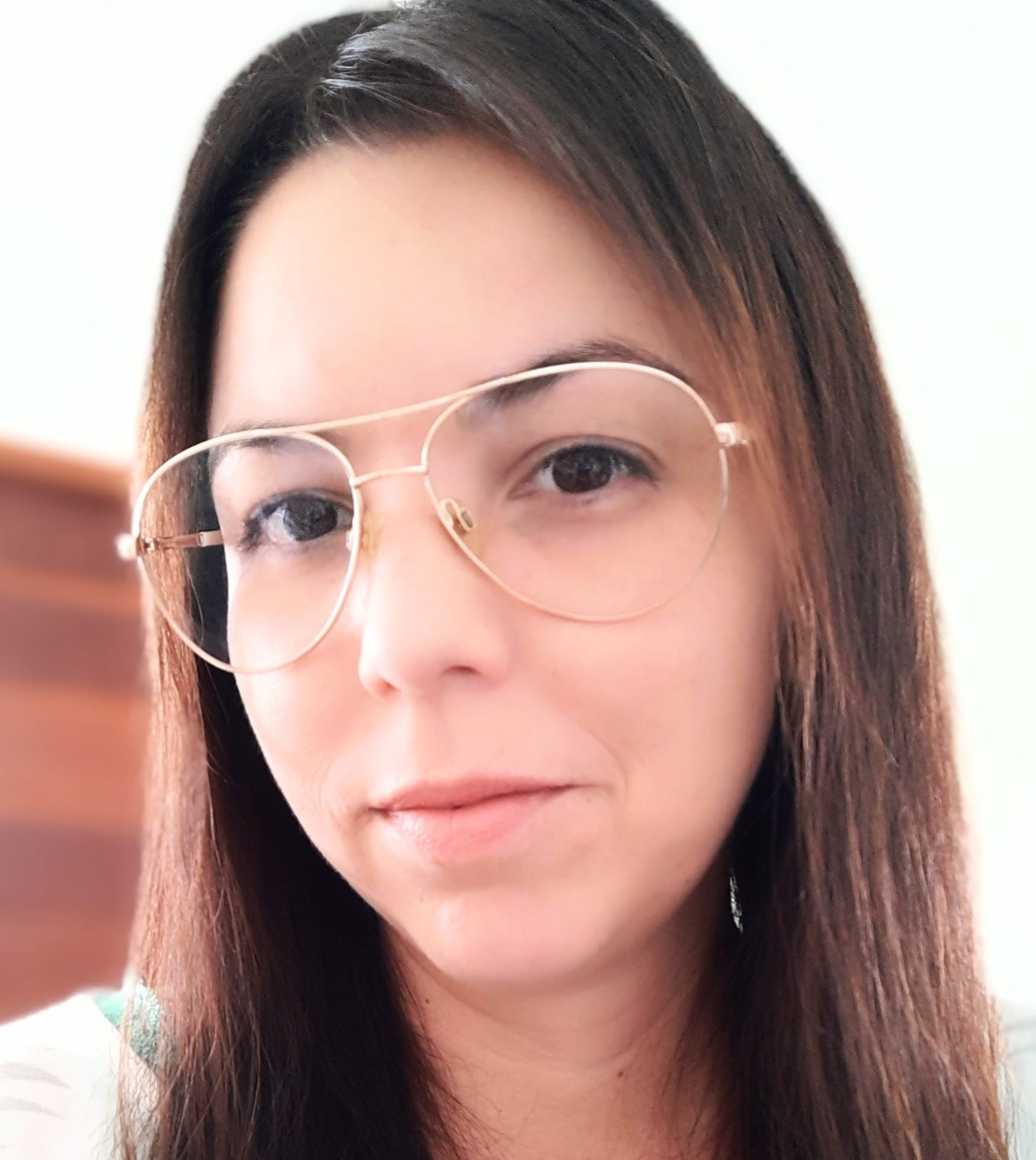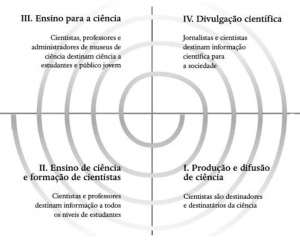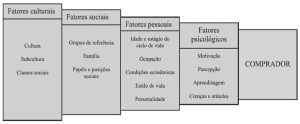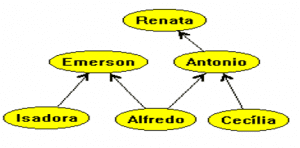ORIGINAL ARTICLE
NOGUEIRA, Karoline Batista [1], REINERT JUNIOR, Adival José [2]
NOGUEIRA, Karoline Batista. REINERT JUNIOR, Adival José. Oratory techniques: Communicating with autistic children. Revista Científica Multidisciplinar Núcleo do Conhecimento. Year 06, Ed. 03, Vol. 03, pp. 149-156. March 2021. ISSN: 2448-0959, Access link: https://www.nucleodoconhecimento.com.br/communication-en/oratory-techniques
ABSTRACT
This article expands the knowledge of the use of oratory techniques for communication between family members and their autistic children. We address here the various signs and disorders of children inserted in Autism Spectrum Disorder (ASD), among them, the deficit in communication and social interaction. I propose, from my personal experience with my autistic son, to employ some oratory techniques, such as: “tone of voice”, “non-verbal language”, “knowledge of the audience”, “perception of the space where one speaks” and the “mastery of the subject”. From some examples, it is possible to perceive that the correct use of these techniques, on the part of the family members, contributes so that the autistic child understands several commands and can establish an effective communication with his parents and relatives.
Keywords: Communication, Public speaking, Autism, Family.
1. INTRODUCTION
This article discusses how oratory techniques can be applied by family members of autistic children with mild degree. I raise here some questions such as: why is it so difficult to make the autistic child comply with a certain command or request, why do the parents and relatives of these children employ inefficient communicational approaches and then why do they not learn proper techniques to deal with communication on a daily basis? This theme highlights the importance of seeking ways to optimize communication between family members and their autistic children. Once the Autism Spectrum Disorder is diagnosed, the child is accompanied by a multidisciplinary team that involves speech therapy, occupational therapy and psychology, in addition to the psychiatrist or neurologist himself. But parents navigate a little known sea, even receive information from these professionals, but the day-to-day interaction with their autistic child is challenging. In this article I bring my experience as a mother of an autistic boy and the challenges to maintaining effective communication. As a journalist I realized that if I use the techniques I learned from my profession, I would have a more understandable dialogue with my autistic son. Thus, this article aims to point out oratory techniques that can contribute to the effectiveness of communication with autistic children, so it is possible to understand, for example, which tone of voice to use, which language is appropriate and vocabulary closest to the reality of this autistic child, which gestures to make, how to use facial expression and how non-verbal language becomes an ally in this process of communicational interaction.
According to Farrell (2008) the difficulties in speech, language and communication compromise the understanding of the meaning of words, thus their understanding. In this way, the effort of the family members is much greater so that this child understands them and meets their requests.
2. UNDERSTANDING AUTISM SPECTRUM DISORDER
ASD (Autism Spectrum Disorder) is a developmental neurological disorder that compromises communication and social interaction skills and usually appears until the age of 3 years. According to Volkmar and Wiesner (2019),
a condição conhecida como transtorno autista, autismo na infância ou autismo infantil (todos os três nomes significam a mesma coisa) foi inicialmente descrita pelo Dr. Leo Kanner, em 1943 (embora provavelmente já tivessem sido observados casos antes disso). O médico fez relatos de 11 crianças portadoras do que denominou “um distúrbio inato do contato afetivo.
Years later, Volkmar and Wiesner (2019) point out that:
Ao final da década de 1970, houve consenso de que o autismo era caracterizado por (1) déficit no desenvolvimento social de um tipo muito diferente em comparação ao das crianças sadias; (2) déficit na linguagem e em habilidades de comunicação – novamente de um tipo distinto; (3) resistência à mudança ou insistência nas mesmas coisas, conforme refletido na adesão inflexível a rotinas, maneirismos motores, estereotipias e outras excentricidades comportamentais; e (4) início nos primeiros anos de vida.
It is also possible to observe other signs of autism such as difficulty in playing make-believe. The presentation of emotional changes in the face of small changes – usually expressed by aggressiveness -, the performance of repetitive body movements or repetitive routines and also the demonstration of abnormal attachment to objects represent some of these signs. Thus, the communication problems caused by this disorder may include: the difficulty in initiating or maintaining a conversation between people, the use of gestures as a form of communication instead of words, the slow development of language or even non-development of it, self-reference of oneself in the third person, and also, the repetition of memorized words or verses.
3. THE DAY-TO-DAY COMMUNICATION WITH AN AUTISTIC CHILD
At this moment I bring my report as the mother of a three-year-old boy diagnosed six months ago with Autism Spectrum Disorder in a mild degree, but these signs that we saw earlier here have already been observed by me since the first year of his life. As the focus of this article is communication, I will specify the language problems presented by my son Bruno.
Volkmar and Wiesner (2019) report that in most cases, parents begin to get worried when their child doesn’t develop words, doesn’t respond to sounds, or seems socially disconnected. And so it was with me. When Bruno was a year old he didn’t answer or look when we called him. Then came the false impression of communication, for he only repeated the words and did not use them with the intention of communicating.
Then, at the age of two, the delay in language was already quite noticeable.We sought early stimulation at this stage and, although he was accompanied by a psychologist and speech therapist, our communication was very difficult, not only because he could not express himself, but because he realized that he also did not understand me.
When I turned three, I began to adopt some oratory techniques and the language used in television journalism, because this was my field of activity, as a journalist, until the present date. Squarisi (2011) reports on speech for television and radio, and says that for these vehicles it is necessary to adopt some techniques such as: Rhythm, use strategic pauses; Emotion, using an emotional charge when speaking; Harmony, organize the words to gain fluency. Here’s a simple example: Bruno was seeing drawing and I needed to offer water. Before I would talk to my son like this: “Bruno your glass of water is here, take it.” He didn’t even look at me, let alone look at the glass. Soon, he amended the sentence: “You need to drink water, you didn’t drink water today.” Bruno kept ignoring my command. At that moment I had two options, use my authority and force him to drink water, which would cause him a greater disorder, because as we saw before, autistic children have an abnormal emotional alteration, or else modify the way I speak. Take this example: “Hmmmm! What good water!” (I hope he looks at me). “I brought es-pe-ci-al-ly to you!” I modified the tone of my voice, in Bruno’s case, it needs to be lower. I paused strategically and altered my facial expression with a smile and so I said the last sentence: “I brought es-pe-ci-al-ly to you!”Worked. He took the glass and drank. My reaction after he drank the water was immediate, only this time, I didn’t say anything, just smiled and made a “positive” gesture with my thumb. I redid this process for several commands and also in attempts to establish a conversation, such as when I wanted to know how his day at school went. I would stop in front of him and smile and ask, “Bruno, what made you so happy today?” Bruno gave a smile and replied: “Matinha!!! I binquei matinha!!! (sic)” Bruno played with play dough. The sound of the letter “s” is still very difficult for him. And so I did several times, always paying attention to some techniques that I will explain later.
Volkmar and Wiesner (2019) recall that attention and hyperactivity problems are very common in children with ASD and can include difficulties listening to commands, disorganization, high levels of activity and impulsivity. That is why attracting the attention of these children to our speech – family speech – is not an easy task, it demands practice and repetition. I applied this method of communication with my autistic son, using resources from oratory during the period from December 2018 to May 2019.
4. ORATORY TECHNIQUES: COMMUNICATING WITH AUTISTIC CHILDREN
4.1 WHAT IS ORATORY?
Ferreira (2017) quotes Ernout and explains: “The essence of oratory is the “discourse delivered in public, the art of good speech, which can be confirmed by etymology, because oratory is built on the radical of os, oris, which means ‘mouth’ and ‘mouth as an organ of speech'” (FERREIRA, apud ERNOUT, 1951, p. 833). Oratory accompanies the human being from his first speech of communication. It is through speech that the human being manifests his thoughts, his feelings and his desires, understood, therefore, as an inseparable source of man and infinite of values (FERREIRA, 2017, p. 108). The author explains that oratory is not magic and highlights that it demands “commitment, dedication, study, training, maturation, courage, a set of values and personal attributes constituting the speaker and appropriate techniques and tools” (FERREIRA, 2017, p. 109). About the tools, the author cites, for example, the “tone of voice”, which allows listeners to capture their “vulnerability, intelligence and their passion”. He goes on to say that the domain of oratory is complex and highlights that, in addition to the care with verbal (oral) communication, it is also necessary to take care of non-verbal communication, whose interference in the effectiveness of persuasion is significant. The gestures speak, communicate and need to be harmonious with the saying, with the discourse. Adding to the “tone of the voice” and the “non-verbal language”, the “knowledge of the audience”, the “perception of the space where one speaks” and the “mastery of the subject” also compose the techniques of oratory.
Oratory can also be understood as “communicative competence” (FERREIRA, 2017, p. 112), if well employed, leads to the conviction and understanding of the discourse. That is why it should be noted here that professionals in media such as radio and television appropriate the techniques of oratory so that the information reaches the listener or viewer in an attractive, creative, effective and easy to understand way. In the field of the internet, “digital influencers” with their followers on social networks also appropriate these techniques. In this way, we observe the renewal, revitalization and rescue of the oratory (public speaking) already seen in Greece and Rome; however, under a scenario that allows a greater reach of listeners, through the ease of sharing and access to discourses at any time and place (FERREIRA, 2017, p. 113). If we can use the techniques of oratory anywhere, why not apply them in our homes? We will see below how oratory influences the family’s communication with their autistic child.
4.2 ORATORY TECHNIQUES AND THE ROUTINE OF EVERYDAY LIFE
4.2.1 AUDIENCE KNOWLEDGE AND SUBJECT MATTER MASTERY
Let’s transpose these techniques to another scenario: the autistic child is your audience. Your home is your space of discourse. Taking into account that you need to have “knowledge of the audience”, it is appropriate at this moment to delve into the characteristics of an autistic child and for this it is necessary to put into practice the search for information, such as what causes discomfort to this child, what can take his attention from your speech? Noise all around? Too loud a voice? Talk too fast?Using words that are difficult to understand? Begin to notice every detail. Each child has its particularities and certainly you know your autistic child well.
It is important to know what you are going to talk about and how to talk – the “mastery of the subject”. It is known that the day-to-day dialogue is simple, questions such as: how was the day, what will you want to eat, bath time has come, which toy, etc. But the choice of words influences the understanding of this autistic child. Therefore, if what you want to communicate is a command for the child to stop throwing the stroller on the ground, for example, know that at that moment the choices of words make a difference, see: “Do not throw it on the ground, so the stroller goes through the air.” Sounds easy to understand, right? But not for an autistic, because looking for information about this child, you will certainly know that expressions that are not possible to identify their meaning through the literal sense causes confusion, communication noise for the autistic child. So prefer the following sentence: “Did the cart fall? Xiiiii, will break the wheel! Leave the cart here, on the table.” Even the word “no” should be avoided – as a mother, I know it’s very difficult. I made this mistake a lot, until I realized that when I said the phrase, “It’s going to be left to you, you better leave your sister alone.” My son was quiet and didn’t understand anything. Until after a few minutes he asked, “Blow?” “Dad?” So, the ideal is to change the vocabulary, avoid expressions of double feeling and even ironies. What you can and should do is repeat the words, thus reinforcing what you want to communicate.
4.2.2 TONE OF VOICE AND NON-VERBAL LANGUAGE
At the moment of the speech – of the speech itself – it is necessary to adjust the “tone of the voice” and have body awareness (“non-verbal language”). The autistic child in the mild degree, usually verbalizes, but there is a difficulty in understanding and responding to certain commands, so he needs to be attracted, to have his attention focused on his speech. Establish a harmonious synchronism between gestures, voice and message (FERREIRA apud POLITO, 2005a, p. 104-114). I applied these techniques in situations of praise and also of correction of a wrong conduct.
In the first situation, I praised him for the drawing made: I widened my eyes – I made a face of surprise and said in a soft voice: “What a beautiful dra-wi-n-g!”, I made my thumb in a positive sign and said: “Very good!”. I bent down, stood next to him and said in the most cheerful voice, “Do you do another one?” And I closed with a smile. Bruno reacted well, made another drawing and then dispersed and went to do another activity. The record of this communicational interaction was kept in his memory, because when I call him to draw, he proposes the activity. I created, in this case, a positive stimulus through the tone of voice, facial expressions and gestures used in this speech.
In the second situation, I called his attention, because he had bitten me (a very common situation for autistic children). This time, my facial expression was angry, I changed the tone of my voice, to make it more serious, but still low and said: “Oh! It hurts!” Bruno reacted with a laugh. That’s right, he laughed at the situation. Grace was in causing me pain. I changed my facial expression – I closed my eyes, my countenance was getting sad, I shook my head in a negative sign and with a firm tone of voice I said: “This is very bad and so sad.” He reacted differently, didn’t laugh. It came out of me. Minutes later (Bruno had this delay in reactions) he returns and apologizes to me.
The family member needs to generate this speech awareness, paying attention to non-verbal language knowing that the gesture, movement, posture and facial expressions describe, complement and reinforce ideas; give color to speech; they replace words; stimulate communication (FERREIRA apud MENDES; ALMEIDA; HENRIQUES, 2010, p. 77); and for the tone of voice, in order to avoid some situations such as, speaking too low, speaking too fast or too slowly. Speak in a shrill voice. Speak in a monotonous tone, without modulation. (FERREIRA apud MENDES; ALMEIDA; HENRIQUES, 2010, p. 75).
FINAL CONSIDERATIONS
Using these techniques is not an easy task, even knowing that human existence necessarily depends on oratory, on speech, which is a system of human interaction (FERREIRA, 2017). What we often lack is to be aware of these techniques and practice them daily. For families with autistic children, oratory techniques can greatly contribute to the autistic child assimilating well the information passed by their parents and relatives. Many of these techniques are applied in therapies, but little taught to those responsible. I hope that this article can contribute to broaden the knowledge of mothers, fathers, uncles, grandparents and siblings of autistic children. There are many public speaking manuals available in the market, but the approach is employed for professional life, to contribute to the sale of products and services or for self-help, such as overcoming the fear of public speaking or techniques for communication professionals. Very little is known how to use oratory techniques in dialogues between autistic children and their families, probably this lack of information contributes to an ineffective communication between them. This article is a small contribution for family members of autistic children to seek ways to make themselves understood and optimize communication with these children. Autism Spectrum Disorder has no cure, but its signs and disorders, such as communication deficit, can be alleviated if everyone involved seeks the right stimulus for this child to develop and maintain effective communication throughout his life.
REFERENCES
FARIAS, Luiz Alberto (Org.). Relações Públicas estratégicas: técnicas, conceitos e instrumentos – organizado por Luiz Alberto Farias – São Paulo. Summus, 2011.
FARREL, Michael. Dificuldades de comunicação e autismo: guia do professor / Michael Farrell; tradução Maria Adriana Veríssimo Veronese. – Porto Alegre : Artmed, 2008.
FERREIRA, Luiz Antonio. Artimanhas do dizer : retórica, oratória e eloquência [livro eletrônico] / organizado por Luiz Antonio Ferreira. -–São Paulo : Blucher, 2017.
SQUARISI, Dad. Manual de redação e estilo para mídias convergentes. São Paulo. Geração Editorial. 2011.
VOLKMAR, Fred R. ; WIESNER, Lisa A. Autismo : guia essencial para compreensão e tratamento [recurso eletrônico] / Fred R. Volkmar, Lisa A. Wiesner ; tradução: Sandra Maria Mallmann da Rosa ; revisão técnica : Maria Sonia Goergen. – Porto Alegre : Artmed, 2019.
[1] Specialist in Business Communication and Communication and Oratory; graduated in Social Communication – Journalism.
[2] Advisor. Specialization in Psychoanalytic Theory.
Submitted: December, 2020.
Approved: March, 2021.






